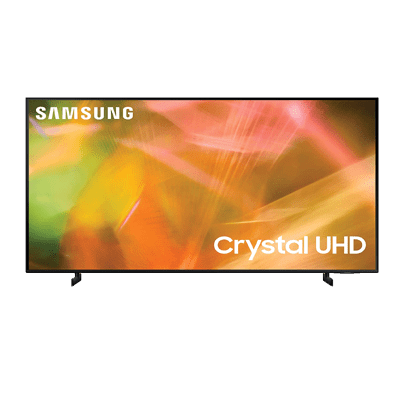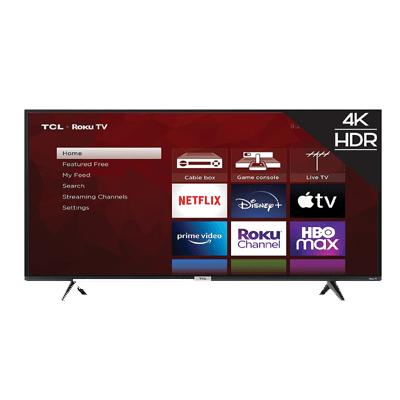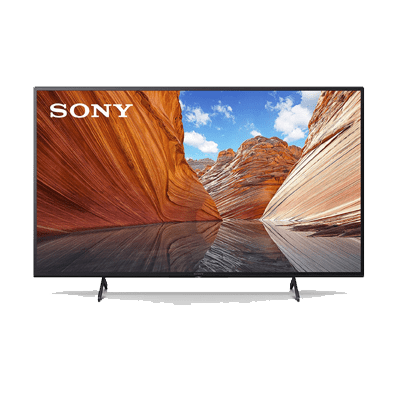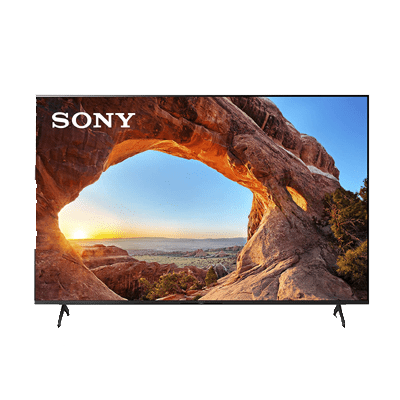A multi-screen arrangement for displaying single or several images is a video wall. Multiple TVs, computer monitors, or video projectors are stacked nearby in a tiled layout to create a single logical screen in a video wall system.TVs are the most significant display devices for video wall setups since they are more versatile than other options and exist in various sizes and thin-bezel designs. Several manufacturers, such as LG and Samsung, have models built explicitly for video wall setups.
Choosing the best TV for video wall can be difficult, but in this post, we’ve made it easier for you. We scoured the market and analyzed various TVs to see which were best for video wall setups. We conducted our research to assist you in making an informed purchasing decision by weighing aspects such as panel thickness, bezel size, display size, and brand trust. A video wall is essentially a wall of displays. It combines many monitors, televisions, or video projectors into a single widescreen with a uniform display. LCD or LED screens are commonly used to create video walls.
They can have any shape or size the builder desires, such as a rectangle or across. Video walls are controlled by controls that allow users to choose what appears on the screen. A video wall controller can be a hardware remote control or software that runs on a computer. For various reasons, video walls are chosen over single huge screens. Video walls often have a better pixel density than single huge screens, and users can personalize tile layouts on video walls.
Today, we’ll take a deeper look at displays, including how they operate, how they differ, how this affects functioning, and, of course, a review of the best tv for video wall on the market. Displays have gone a long way in recent years.

LG 80 Series 65″ Alexa Built-in, 4K UHD Smart TV

SAMSUNG 65-Inch Class Crystal UHD AU8000
The buying guide on the best TV for Video Wall:
TV shopping has become a little bit more complicated in recent years, primarily due to the proliferation of new features and choices. What is the most important thing to look for on a video wall TV? We are here for you.
Size of display
The larger the TV, the less glare-like interference. However, the size of the TV you need to get depends on the size of the video wall you need. Consider the actual screen size, not the end-to-end size. Ideally, all TVs should be the same size for good looks.
There are no strict rules for determining the right size TV. Personal taste, vision, and even eyesight all play a role. However, if you need guidance, you can try one of many free calculators online. Remember that the goal is to create a comfortable and immersive viewing experience. You don’t want to be so close that you can’t see the big picture or too far to miss the high-resolution details you’re paying for.
Hardware of TV
Hardware is a broad category. For example, some TVs are designed to facilitate alignment and make the setup process seamless. In addition, video wall TVs are linked to each other so that all TVs can execute the same command from one source.
This is called a daisy chain. The TVs in the video wall should be daisy-chained using the same power, video, and command signals for easy use. Choosing the right TV is paramount to the functionality of your video wall, and it can be difficult to determine which TV is best for you, considering all the factors.
Bezel
This is probably the most important feature to consider. The thin bezel minimizes the distance between TV screens and creates a wider display area. As video wall technology continues to grow in popularity worldwide, the word “dazzling” may be heard more and more in the industry. The word “bezel” refers to the frame around the digital screen.
Thanks to today’s thinner bezels, there are fewer obstructive “grid lines” on the video wall. This gives the impression of a single cohesive screen rather than simply installing multiple displays. The result is a much more attractive video wall, perfect for video wall installations. As screen prices continued to fall, low-budget customers were able to take advantage of the potential impact of video walls.
A thick presence is likely to interrupt the expertise of the user’s interactive user, who can disturb the nature of the mass of the video wall. Imagine you flush the video wall product options and are blocked by two-inch bezels on each side. As much as possible by searching for video walls with the thinnest relaxation
Resolution
A pixel-dense TV makes it easier to see text and images up close. Also, the content looks better and more fulfilling than the pixelated blobs that float around the screen. High-resolution TVs such as 4K resolution are ideal for video walls. The screen consists of millions of pixels arranged horizontally and vertically. The resolution of the TV screen reflects this number of pixels by multiplying it by two numbers horizontally and vertically.
In recent years, there have been advances to even higher resolution screens. Welcome to the world of Ultra HD! Ultra HD TV screen resolutions are either 4Kor 8K. You may now see the Ultra HD resolution screen described in many “marketing” terms. There are references to 4K, 8K, ultra high resolution, Ultra HD 4K / 8K, SUHD, etc. However, they all show the same resolution improvement for new flat-screen TVs.
Image resolution is the number of pixels in the image sent to the TV. If you want to understand the importance of TV screen resolution, you need to know that the image resolution is not the same as the TV’s native resolution. Unlike the fixed native resolution, the resolution of an image depends on how it was recorded and sent.
Durability of TV
Image resolution is the number of pixels in the image sent to the TV. If you want to understand the importance of TV screen resolution, you need to know that the image resolution is not the same as the TV’s native resolution. Unlike the fixed native resolution, the resolution of an image depends on how it was recorded and sent.
Video wall location and design
The site for the video wall will help you choose the ideal TV. For example, is it indoors or outdoors? TVs for outdoor video walls should have high maximum brightness and anti-glare features. Here are some great outdoor TVs.
The format of the video wall is likewise important. Some TVs could be a mismatch for the layout or format you’re searching for. If you want to expose video games on your video wall, examine gaming TVs. If you’d want to show off art, keep in mind TVs with accurate HDR and excessive assessment ratios.
Sound quality
Also, the Sound needs the highest audible frequency so that everyone can enjoy TV while entertaining. As audio technology advances, the enterprise will do everything possible to ensure high audio quality. If you want to get the tone, the price will be higher, but it will last longer. The importance of high sound quality in a fulfilling environment cannot be exaggerated. The woofer and additional speakers are also compatible with the device, ensuring excellent TV sound.

Reasons to Buy
Reasons to Avoid
The Amazon Fire TV Omni series is a very basic entry-level 4k TV. Along with the Amazon Fire TV 4 Series, one of the first Amazon-branded TVs. Dolby Vision is a slight improvement over the 4 Series by supporting larger sizes and better build quality. Great for dark rooms with excellent contrast and excellent black uniformity. Bright enough to handle glare in most rooms, unless there is too much natural light.
With a wide range of streaming apps, you can get rid of judder from any rare source on 60Hz TV. The remote control has built-in voice control, and the TV has a microphone for hands-free control. Unfortunately, it also shares many of the same flaws as the 4 Series. It has low accuracy and suffers from color and white balance issues due to the lack of calibration settings. Also, the slow response time causes a noticeable blur behind fast-moving objects.
The Amazon Fire TV Omni series is an excellent TV overall. The contrast is excellent, so watching a movie in a dark room is okay. Good for watching TV shows in a bright room, but not ideal for sports or video games due to slow response times. Unfortunately, HDR doesn’t look very bright and can’t display a large color space, so it adds almost nothing to movies and games. Finally, we don’t recommend using it on a PC as the text will look blurry and becomes the best consumer tv for video wall.
Also Read: Best 82 Inch TV

Reasons to Buy
Reasons to Avoid
The Samsung AU8000 4k TV will replace the Samsung TU8000 in 2020. This is a basic model without features such as variable refresh rate (VRR) and HDMI 2.1 support, but you can expect it from a budget-friendly option. Due to its high native contrast ratio, VA-like panels work best in dark rooms, but there is no local dimming feature to improve black levels.
It doesn’t get much brighter because it improves its predecessor in some areas, such as good reflection treatment, but it’s not a bad choice for rooms with low lighting. This is because the viewing angle is narrow and the image looks faded from the side. Samsung AU8000 is suitable for mixed-use. The high native contrast ratio makes it suitable for watching movies, but there is no local dimming to improve the contrast making it the best tv for a video wall.
It is suitable for watching TV programs and sports because of its excellent reflection processing. Still, it is not suitable for a wide seating arrangement due to its narrow viewing angle. The lack of gaming capabilities and slow response times move it look blurry, but the input lag for a responsive gaming experience is low. Unfortunately, it can’t display the wide color gamut of HDR content, and it’s not bright enough to bring out the highlights.

Reasons to Buy
Reasons to Avoid
The TCL 4 Series 2021 is a decent entry-level TV. It’s pretty basic for additional features, but it’s expected for models in this price range and works pretty well for most uses. It has a VA panel that displays dark black, so it works best in dark rooms, but it doesn’t brighten, so it’s not very suitable for bright rooms. Reflection processing is appropriate.
HDR performance is limited because it cannot display a wide color gamut and does not have local dimming capabilities. However, there is no upscaling issue if you want to watch low-resolution content. Our device has RokuTV built-in, but we also have a variation of Android TV, the TCL4 Series / S435 Android 2021, so you can get one with your favorite smart system that’s how it becomes the best tv to use for video wall.
The TCL 4 series is a TV suitable for most applications, so it’s perfect for watching movies in a dark room but without local dimming. When watching a show or sport in a bright room, proper reflections are possible, but not bright enough to fight a large amount of glare. The input lag is relatively small, so there is no problem with the game. However, if the response time is slow, black stains will occur. Finally, HDR content is nothing special because it can’t be brightened and can’t display large color space.

Reasons to Buy
Reasons to Avoid
The LG UP8000 is an affordable entry-level 4k TV. It replaces the 2020 LG UN7300 and UN8500 and uses an ADS panel that behaves like an IPS panel and its predecessor. This type of panel has a wide viewing angle, making it ideal for wide seating arrangements, but it is not suitable for dark rooms due to its low contrast and lack of local dimming to improve performance in dark rooms. Unfortunately, it doesn’t get very bright.
It’s not bright enough to fight intense glare and provide a satisfying HDR experience. Also, because you can’t see a wide color gamut, some HDR content will show vibrant colors dull and muted. Due to the long response time, you can see the movement of sports and games. However, the flicker of the 120 Hz backlight may cause duplicate images. The input lag is very small, but the refresh rate is limited to 60Hz and does not support advanced gaming features such as variable refresh rates and HDMI 2.1 bandwidth.
Overall, the LG UP8000 is a great TV. The wide viewing angle but low contrast makes it ideal for large seating arrangements in moderately bright rooms. Good response time makes it suitable for watching sports, but a 120Hz backlight flicker can cause overlapping motions. The less input delay makes the game more responsive. However, the refresh rate is only 60Hz, and there is no support for variable refresh rates to reduce screen tearing. Unfortunately, I watch movies in a dark room because of the low contrast ratio and the lack of local dimming.

Reasons to Buy
Reasons to Avoid
This 65-inch screen takes in every experience in spectacular 4K Ultra HD. It has DTS Studio Sound, which produces realistic and immersive audio. Control everything with your voice, including live over-the-air channels and streaming. Alexa can open apps, look up movie titles, and more. The Insignia NS-65F301NA22 65″ Class F30 Series LED 4K UHD Smart Fire TV is a low-cost, high-performance option. Fire TV brings together live over-the-air TV and all of your streaming channels on the main screen.
Use Alexa to search for and watch live over-the-air TV with any HD antenna, or choose from an extensive collection of broadcasting movies and TV shows from Disney+, Netflix, YouTube, Prime Video, Hulu, and more. You may also subscribe to Sling TV, DIRECTV NOW, and other services to watch even more live Television programs. One of the three HDMI connections on the TV can also be used to connect your cable/satellite box or gaming console.
With ultra-thin bezels, high-quality metal accents, and a broad chin below the screen, the Insignia 65-inch Class is a sleek and modern-looking TV that maintains an understated style. The bezels are so small that they blend in with the background, making them ideal for use on a video wall. Netflix, Hulu, YouTube, Amazon Prime Video, and others are among the supported streaming services. You can also use the built-in Chromecast and Apple Airplay to stream video from your phone to the TV screen, which works with Android and iOS devices.
The Insignia 65-inch employs Triluminous technology to offer brighter, more vivid colors, which improves color accuracy. To address the issue of poor image quality from any angle, Sony employs X-Wide Angle technology, which allows the TV to maintain image and color constancy from any angle. This set also has a latency time of 222.4ms, making it ideal for gamers.

Reasons to Buy
Reasons to Avoid
The X80J’s 65-inch heel is its poor contrast; its black levels are too shallow to give the essential visual detail we’ve come to expect from a device in this price range, and its HDR performance is limited by its average brightness. As a result, it’s a poor choice for both dark and bright viewing circumstances. It’s also tough to suggest the X80J to dedicated budget gamers because it lacks even the most basic gaming-related upgrades widely available elsewhere.
The Sony X80J isn’t a horrible television, but it’s unclear who would profit more from it than its rivals. Even in the mid-range category, cinephiles will find better options, gamers will find better options, and gamers will find better options. The Sony X80J has basic connectivity choices that most people will find satisfactory. Still, those looking for cutting-edge technology may be frustrated by the TV’s lack of HDMI 2.1 ports.
In terms of its innovative platform, the Sony X80J has the same interface as its Sony Xperia siblings, which is popular because of its ease of use and access to hundreds of media apps, content possibilities, and other features. Hulu, Netflix, Amazon Prime Video, Spotify, Tidal, YouTube, and Sling TV are among the major streaming media companies included. The X80J’s color reproduction in HDR is less stunning, but it does the job.
So because attention is generally on the picture quality, most TVs don’t have a fantastic sound. The R625 has many audio enhancement features, such as surround sound upscaling and dialogue enhancement, so it doesn’t sound bad. Nonetheless, the output is poor, and a soundbar would be an excellent addition to this set. A subtle color desaturation accompanies the off-angle sensation but no radical color shifting. This makes it a better-than-average option for group viewings, which is a plus for the X80J, given many TVs in the X80J’s price range that don’t fare as well.

Reasons to Buy
Reasons to Avoid
The X85J is intelligent, powerful, and attractive, and it’s ready for all of your favorite entertainment. Super-bright 4K HDR photographs come to life with brilliant color and realistic contrast thanks to the X1 4K HDR Processor. Your favorite entertainment has a new home thanks to improved Motionflow technology and Google TV, which are available in various sizes. It’s a good TV with excellent dark room performance because of its high contrast ratio and black uniformity.
It’s ideal for bright spaces because it has a high peak brightness and good reflection handling, so glare isn’t an issue until there’s a lot of natural light. It uses the upgraded Google TV interface, identical to the Android TV interface on prior Sony TVs.After a firmware upgrade, gamers will love the reduced input lag, HDMI 2.1 bandwidth, and variable refresh rate (VRR) support. Unfortunately, it lacks a local dimming capability to increase contrast in tragic scenes.
The perfect black uniformity and outstanding contrast are fantastic for watching movies in the dark, but it lacks a local dimming option, which is disappointing. During the day, it’s a terrific TV for watching sports or TV shows, and its low input latency and quick response time make it a good choice for gaming. With ultra-thin bezels, high-quality metal accents, and a broad chin below the screen, the Sony X85J is a sleek and modern-looking TV that maintains a discreet design.
The rear of the TV resembles that of the Sony X90J. The majority of the back panel is covered in a grid-like design. However, unlike the X90J, there is no brushed aluminum square in the middle. Each leg has a clip for cable management. Although simple, it might assist in keeping the rear of your television tidy. The Sony X90J’s sound system consists of two down-firing speakers and two tweeters located at the top and rear of the TV’s screen. The audio quality of the output is average, to the point where the TV struggles to deliver correct conversation.
Also Read: Best 28-Inch Smart TV
FAQS
Moving towards some FAQS.
Wall of multi-screen televisions. Many TV screen video walls allow you to display multiple feeds simultaneously while employing various screens for each content channel. Multi-screen TV walls, for example, can serve as a command center, displaying real-time data from your most critical sources.
To create a video wall, you’ll need to select TVs made explicitly for this purpose and contain the features that a video wall requires. Thin bezels are standard on video wall TVs to keep the spaces between the screens to a minimum. TVs disrupt the smooth integration of the display area with thick bezels.
Conclusion
Choosing the best TV for video wall can be difficult, but we’ve made it easier for you in this post. We scoured the market and analyzed various TVs to see which were best for video wall setups. We conducted our research to assist you in making an informed purchasing decision by weighing aspects such as panel thickness, bezel size, display size, and brand trust.
